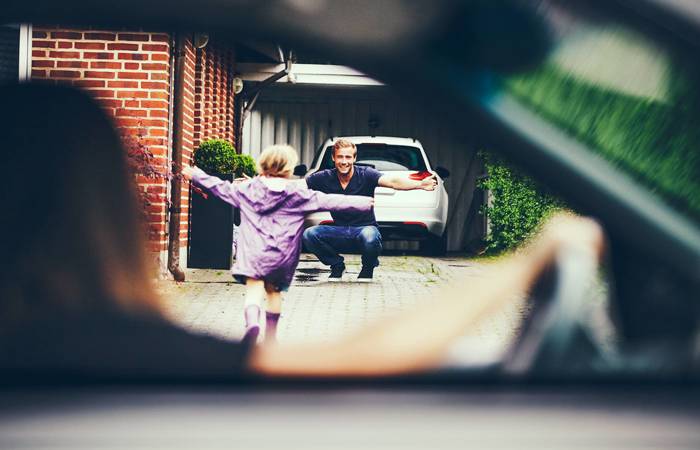Like what you see?
Sign up to receive more free parenting advice.
Thank you for subscribing to our newsletter!
Lifestyle

iStock.com/frankiefotografie
The main challenge for stepparents is to develop their own unique role within the family that works for everyone.
Snow White’s tried to kill her with a poisoned apple. Cinderella’s practically made her a slave. It’s no wonder that we have a less-than-favourable stereotype of stepparents, particularly stepmothers.
Phoebe Wallish, Director at Stepfamilies Australia explains that due to the negative association with ‘step’, it’s challenging to accurately capture how many Australian stepfamilies there are.
“Roughly, 25 per cent of us will be part of a stepfamily in our lifetime and this number is growing,” she says.
The main challenge for a stepparent entering a family is to develop their own unique role that works for both themselves and the family.
“Stepparents need to set realistic expectations going in,” recommends Wallish.
“Building a successful relationship with children will take time, but the good news is that with children five and under, there is a lot of time to build lifelong connections and family memories.”
In fact, Susan Lancaster, Counsellor and Psychotherapist at Sydney Step Family Counselling, says it can take two to three years for a stepfamily to find its groove.
The successful stories are those families who acknowledge the difficulties of step relationships and choose to confront and solve the challenges of ‘step’Sue Lancaster
Overcoming the challenges of becoming a stepfamily
The role as a stepparent
Both Lancaster and Wallish highly recommend open communication between the adults, not only to define the new family rules, but also to define each other’s role in the new family unit.
“Discussing your needs, wants and desires can be challenging, but it is especially paramount in the early days,” recommends Lancaster.
“A couple’s strength is the foundation of the stepfamily.
“Role ambiguity is something most adults in stepfamilies face at some point.”
Lancaster explains that, at the start, a person begins by assuming two new functions: spouse and stepparent.
Without clear communication, Lancaster warns that resentment can arise, especially when there is an imbalance between being recognised for all you do and feeling supported and respected in your role.
“If you aren’t talking about what’s expected, then assumptions can be made,” adds Wallish.
“Especially for women coming into a heterosexual stepfamily. The gender stereotype of being the main carer can come into play and blur the role of ‘mum’.
“The children already have a birth mother, and a stepmother’s role is quite different. It’s more of ‘the other supportive adult’.”
The ex
Another consideration for stepparents is managing the relationship with the ex-spouse.
“The stepparents needs to be the supportive person for their partner if disputes arise with their ex,” Wallish explains.
Lancaster highlights that, while ex-spouses no longer relate to each other as husband and wife, they must establish a working relationship for the children’s sake.
“How a stepparent handles a child’s relationship with the other birth parent (or the ex) will influence the child’s relationship with them,” she adds.
The children
According to Wallish, children can have a variety of feelings ranging from feeling like their re-partnered birth parent is abandoning them, jealousy over the reduced time their re-partnered birth parent will be able to spend with them, guilt over their other birth parent being alone, confusion of whether they should spend time with their stepparent and finally, loss of any hope their birth parents will get back together.
“Slow things down as much as possible for the children and have a lot of open, age-appropriate communication around the changes that are happening,” recommends Wallish.
“For young children, reading them books on becoming a stepfamily can be helpful, or engaging in activities that the children are interested in to build a relationship.
“But don’t push it. Be patient. Relationships take time.”
Lancaster explains the concept of conflict of loyalties. This is when children get close to the stepparent, but then question whether this new relationship means they don’t like their other biological parent anymore.
“The stepparent feels the child is getting close to them, and then all of a sudden they pull away,” she explains.
“Give it time and let the child know you aren’t replacing their other parent, but you are another person who will care for them.”
It’s also important to remember that children, particularly young children, rely on structure and predictability to give them a sense of security.
Separation and re-partnering force children to experience a lot of change, which can come with mixed emotions.
“As a new stepparent, be there for the children,” Lancaster says.
“Sometimes you can’t fix or solve the situation but give the children time to process what they are going through and let them know you are there for them.
“You support your partner to nurture and care for their children.”
Finally, Lancaster adds that children need age-appropriate agreed-upon family rules or guidelines and a stepparent’s role is to praise when they’ve followed these rules and, when they don’t adhere to them, gentle explain to them why the rules are there in the first place.
Same-sex stepparents
“Same-sex stepfamilies generally meet their stepfamily challenges with higher levels of flexibility, lower levels of reactivity and higher levels of stepfamily cohesion than their heterosexual counterparts,” Lancaster says.
However, she explains that the same loyalty issues may arise. For example, if their father re-partners with another man, they may worry more about how their mother is feeling about their father’s new relationship and find it hard to allow themselves to become close to their father’s new partner.
“Challenges with social stigma surrounding same-sex couples and finding less outside support often creates more care, cohesion and understanding within the same-sex stepfamily, strengthening family closeness and bonding,” Lancaster adds.
Books to help stepfamilies:
For the children:
More People to Love Me by Mo O'Hara
My Big Fantastic Family by Charlotte Guillain, Adam Guillain
Love Makes a Family by Sophie Beer
Two Homes by Claire Masurel
For the adults:
The Other Mother by Kelly Chandler
Blending Families: The Honeymoon Comes Later by Max Price
Stepmonster: A New Look at Why Real Stepmothers Think, Feel, and Act the Way We Do by Wednesday Martin






